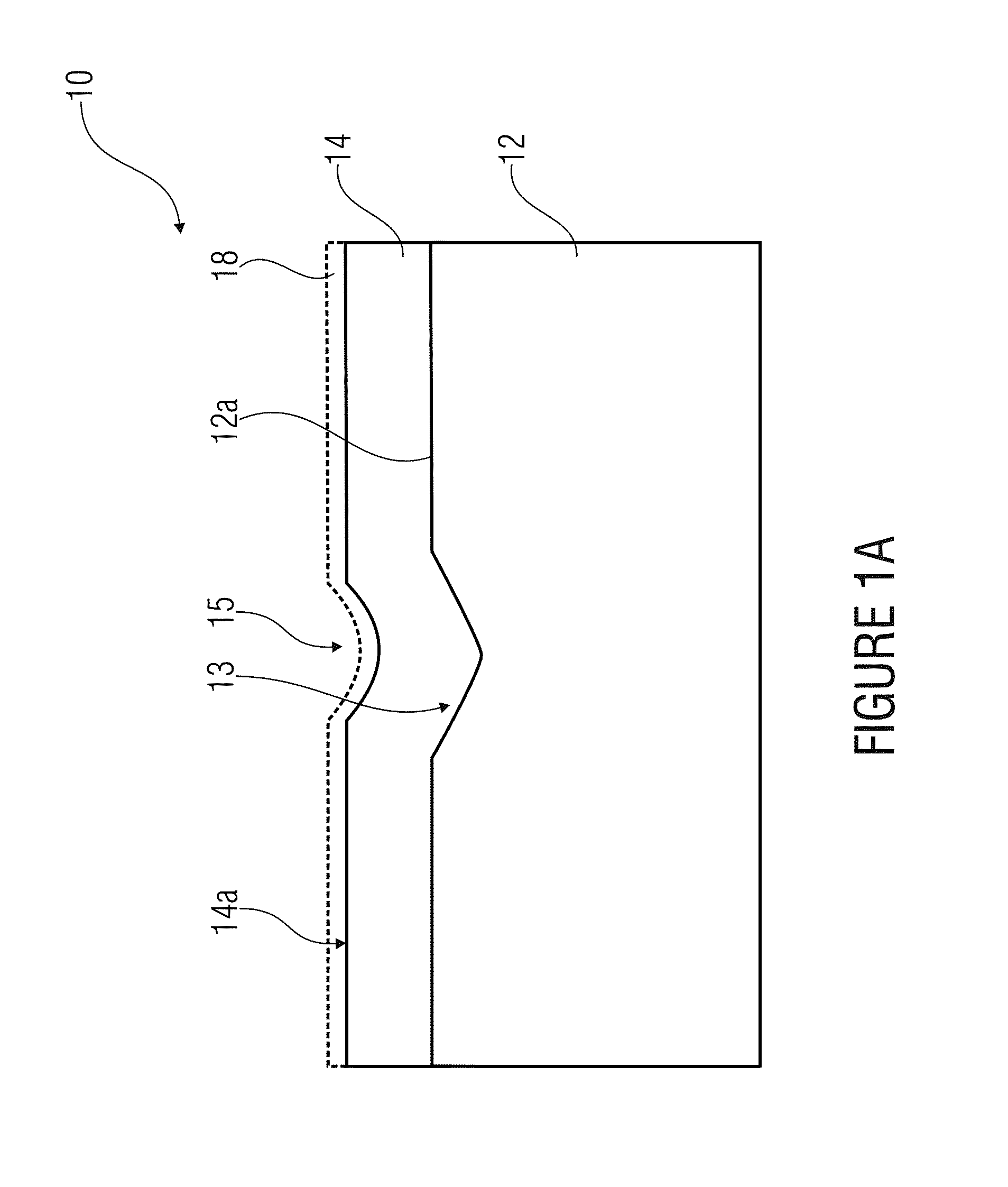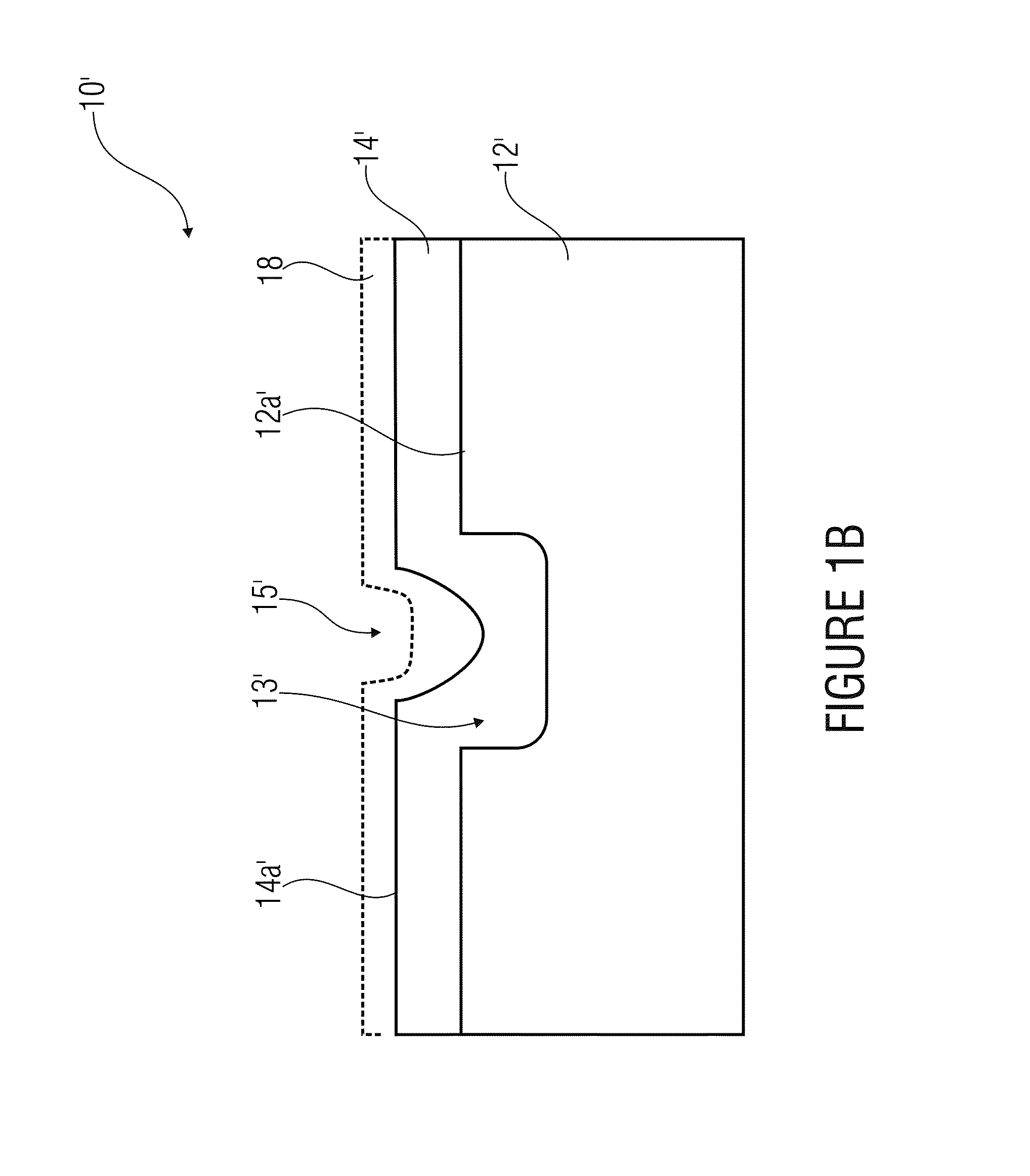Optical element and production of same
a technology of optical elements and production methods, applied in the field of optical elements and production of same, can solve the problems of high production cost, limit the degree of miniaturization that may be performed, and low cost, and achieve the effect of low cost and simple production method
- Summary
- Abstract
- Description
- Claims
- Application Information
AI Technical Summary
Benefits of technology
Problems solved by technology
Method used
Image
Examples
Embodiment Construction
[0025]Before embodiments of the present invention will be explained below in more detail with reference to the figures, it shall be noted that elements which are identical or have identical actions are provided with identical reference numerals, so that the descriptions thereof are mutually applicable or interchangeable.
[0026]FIG. 1a shows an optical element 10 in the sectional representation with a structured carrier layer 12 and a layer 14 of cured material, which is arranged on the structured carrier layer 10, or on a first main surface 12a thereof. For example, the structured carrier layer 12 may be a photoresist applied to a substrate, or may be a structured substrate such as a glass or silicon substrate (silicon wafer), for example. The carrier layer 12 has, e.g., a thickness of 100 μm or generally a thickness within a range from 5 μm to 2 mm. The cured layer 14 typically includes a dielectric such as a polymer, PU (polyurethane) or a silicone (PDMS: polydimethylsiloxane), for...
PUM
 Login to View More
Login to View More Abstract
Description
Claims
Application Information
 Login to View More
Login to View More - R&D
- Intellectual Property
- Life Sciences
- Materials
- Tech Scout
- Unparalleled Data Quality
- Higher Quality Content
- 60% Fewer Hallucinations
Browse by: Latest US Patents, China's latest patents, Technical Efficacy Thesaurus, Application Domain, Technology Topic, Popular Technical Reports.
© 2025 PatSnap. All rights reserved.Legal|Privacy policy|Modern Slavery Act Transparency Statement|Sitemap|About US| Contact US: help@patsnap.com



